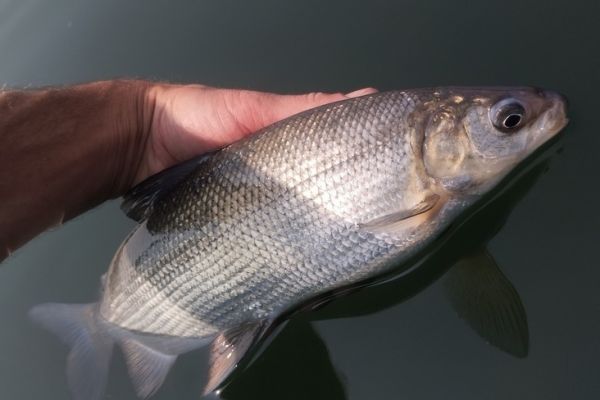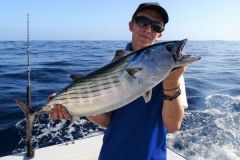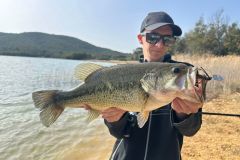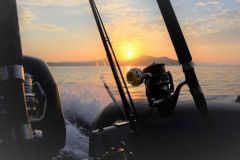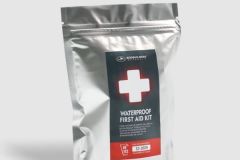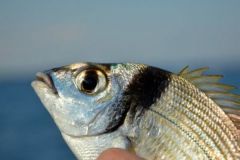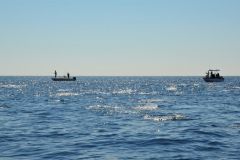Fishing for whitefish from a boat
The whitefish is an attractive, elongated silvery fish. It swims at great depths, generally between 10 and 40 m depending on the season. They feed on plankton and aquatic insect larvae, mainly chironomids.
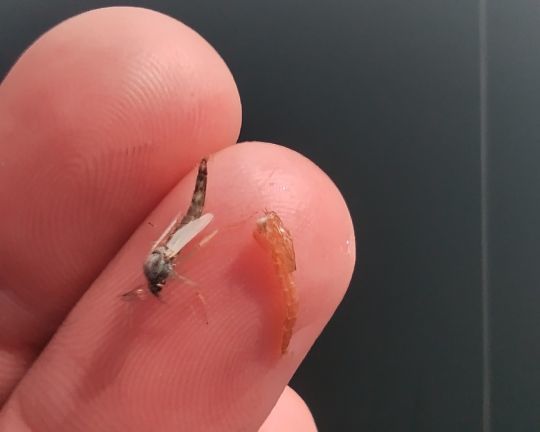
Fishing is done from a boat. It consists of presenting imitations of these little creatures, trying to reproduce the ascent of the larva through the water layer, as it seeks to reach the surface to emerge and live out its life as a flying insect. The touch is often very subtle, a far cry from the violent strokes of a vertical pike-perch. Here, it often translates into a slight movement of the tip.
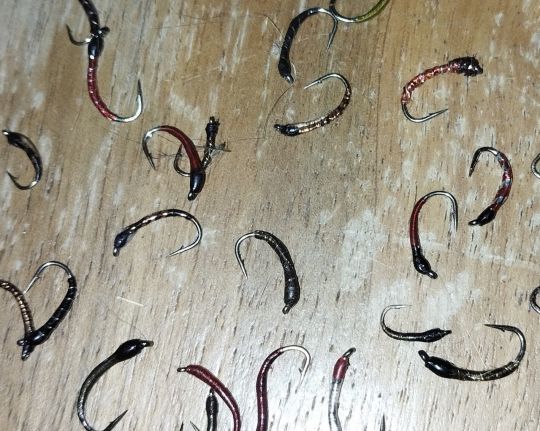
Before the advent of electronics, anchoring was a haphazard affair. Anchoring a boat in 25 m of water was no mean feat... Then you had to use a long line made up of numerous nymphs to present your imitations in different layers of water. Once the fish had been hooked, it was impossible to bring it back to the net with this long line, and impractical rod extenders had to be used.
Modernity is good for you
Now you can see (on screen) the fish and therefore the depth at which they are moving. This makes it possible to avoid long lines that are prone to tangling. We use short rods, between 1.50 and 2.30 m, equipped with highly sensitive tips and bright colors to detect the slightest touch.
We always use lines with several small nymphs (hooks used range from 12 to 18) mounted on gallows to cover a certain water column (about 2 m) but also to be able to present different nymphs (size, color...) according to the insect emergences of the day and the mood of the fish. This line ends with a sinker (from 7 to 20 g depending on conditions and depth).
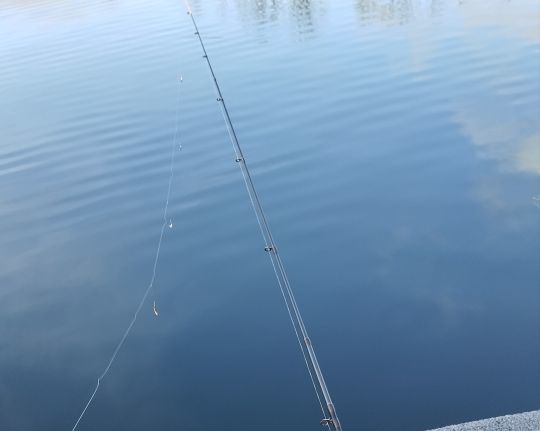
The action consists, once the fish have been spotted, in lowering (or raising if our rig is deeper) the line to their level. We can then make this slight upward movement (otherwise known as pumping) to reproduce the path of a larva returning to the water's surface. The touch is rarely felt tactilely; it's a movement of the tip, sometimes minute, that will indicate the presence of a nymph and trigger a soft, ample strike.
These fish often swim in schools of several individuals. Close to the bottom or between two waters, which is why echo sounders are so useful.
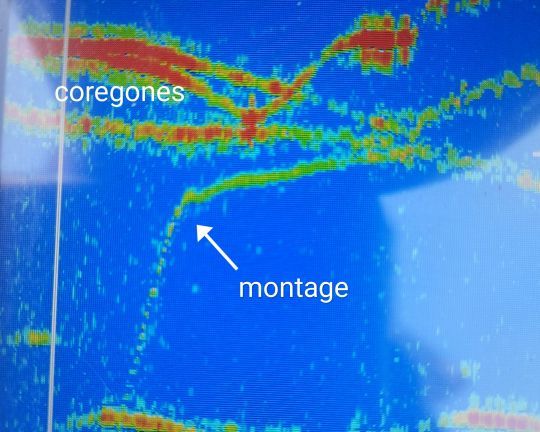
A peach full of subtleties
There are many subtleties to this type of fishing. The diversity of nymphs knows no bounds, and neither does the variation in animations. Sometimes you have to stay still, sometimes you have to animate quickly, so the game is to find the best combination and constantly adapt to the changing behaviour of these whimsical fish.
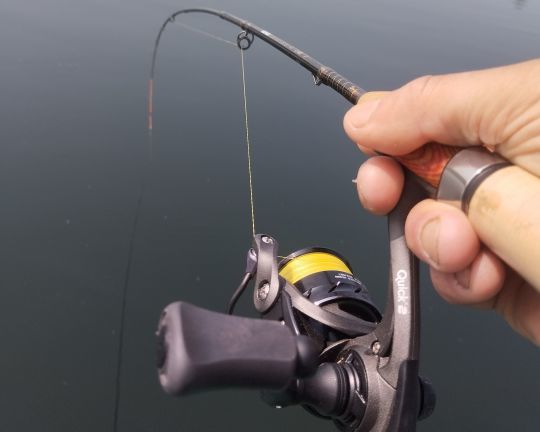
Once the fish is hooked, another pleasure comes into play, as these fish are brave fighters.

